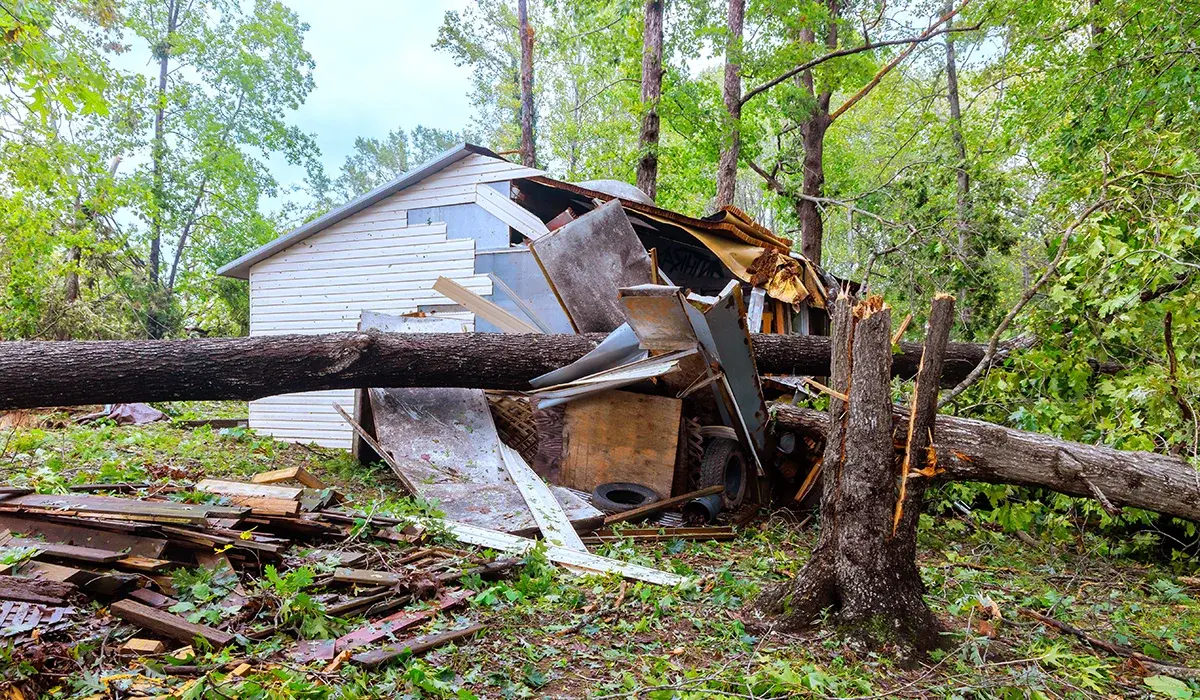Roofing
Tree Fell on Your Home? Here’s What to Do

Fallen Tree Action Plan: What to Do When a Tree Falls on Your Home
While trees enhance your home’s beauty and comfort, their collapse can create a stressful situation. A fallen tree can cause significant damage and put your safety at risk. This Fallen Tree Action Plan will guide you on what to do if a tree falls on your property, how to assess the damage, contact your insurance provider, and consider the age of your roof.
Assess the Damage and Contact Your Insurance Provider
The first step in your Fallen Tree Action Plan is to assess the damage caused by the fallen tree. Depending on the severity of the damage and weather conditions, you may need to evacuate your home. If the tree has caused serious damage, consider the safety of all occupants before acting.
Next, immediately contact your homeowner’s insurance provider. Report the damage and file a claim as soon as possible. The insurance company will assign a claims adjuster to evaluate the damage and determine your coverage eligibility. Be aware that different insurance policies cover various types of damage, and your eligibility depends on your provider’s policy.
Document the Damage and Gather Receipts
As soon as you can, document the damage. Take clear photos of broken windows, holes in the roof, or any structural damage. Additionally, keep records of any temporary repairs made to prevent further harm, such as boarding up windows or tarping the roof. These actions are crucial to help with your claim.
You should also contact a local roofing company to assess the damage. Record all receipts for any repair work done. This documentation will be needed to ensure you receive the maximum coverage your policy offers. Roofsimple can help homeowners navigate the roof claims process and get the coverage they deserve.
Understand Your Roof’s Impact on Insurance Coverage
An important aspect of your Fallen Tree Action Plan is understanding how the age and condition of your roof affect your insurance coverage. If your roof is old, full coverage might not be available. Insurance adjusters often take the roof’s age into account when determining how much coverage you’ll receive.
Many insurance policies include a “wear and tear” clause, which excludes coverage for damage caused by natural aging. It’s also essential to consider your deductible. For example, if your deductible is $2000 and the repair costs $1000, your claim may not be accepted. It’s wise to consult with your insurer about the impact of your roof’s condition on your coverage.
What to Do if Your Roof Insurance Claim Is Denied
In the unfortunate event that your roof insurance claim is denied, you have a few options. First, appeal the decision by providing more documentation. You can submit additional photos, receipts for temporary repairs, and other evidence that supports your claim.
If your appeal is unsuccessful, consider negotiating with your insurance company. This might involve accepting a lower settlement or reaching a compromise. As a last resort, you can take legal action. However, legal proceedings can be costly and time-consuming, so it’s better to explore other options first.
Explore More Roofing Insurance Tips
Having a Fallen Tree Action Plan is essential for managing roof damage after a tree falls. By assessing the damage, documenting it, and understanding your insurance policy, you can ensure a smoother claims process.
Explore more news on this website to learn more about roofing insurance and home repair tips!
